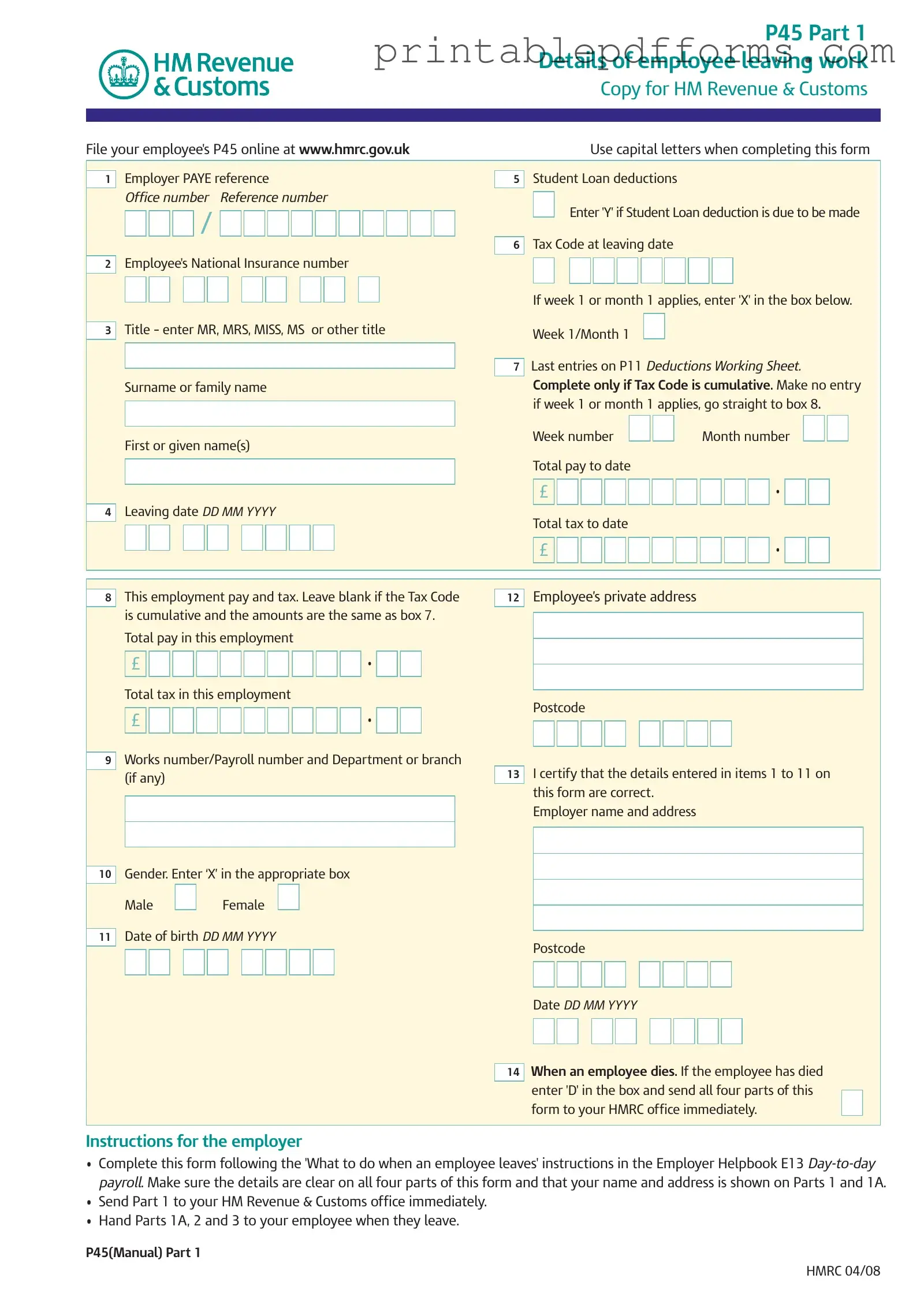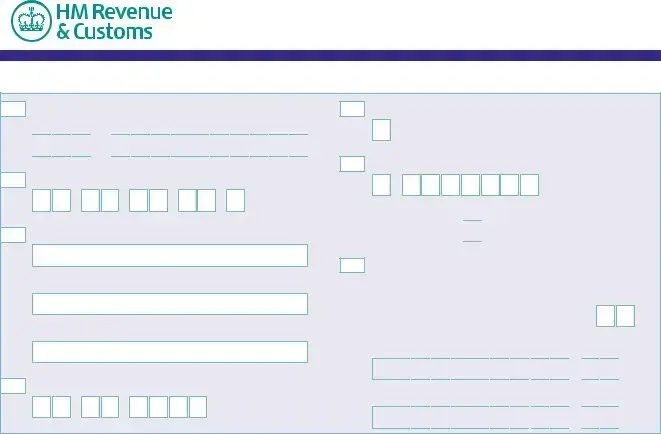The P45 form is a document issued by an employer when an employee leaves their job. It provides essential information about the employee's earnings and the taxes paid during their employment. This form is crucial for both the employee and the new employer. It ensures that the employee is taxed correctly in their new position and helps avoid overpayment of taxes. The P45 has multiple parts, with specific sections designated for the employer, the employee, and the new employer.
Completing the P45 form requires attention to detail. Here are the key steps to follow:
-
Fill in the employer's PAYE reference and office number.
-
Provide the employee's National Insurance number and personal details, including their name, address, and date of birth.
-
Indicate the leaving date and the total pay and tax to date.
-
If applicable, mark whether student loan deductions are due and specify the tax code at the leaving date.
-
Ensure all entries are clear and accurate, and sign the form to certify its correctness.
Remember, it's essential to send Part 1 of the form to HM Revenue & Customs (HMRC) immediately after the employee leaves, while Parts 1A, 2, and 3 should be handed to the employee.
What should an employee do with their P45?
Upon receiving their P45, an employee should keep Part 1A safe, as it contains vital information for future tax returns. They need to provide Parts 2 and 3 to their new employer when starting a new job. If they are claiming Jobseeker's Allowance or Employment and Support Allowance, they should take the form to their Jobcentre Plus office. It's important to handle this form carefully, as copies are not available.
What happens if the employee dies?
In the unfortunate event of an employee's death, the employer must mark the P45 form with a 'D' in the designated box. All four parts of the form should then be sent to HMRC immediately. This ensures that the tax affairs are handled correctly and that any necessary adjustments are made in a timely manner.
What if I don't have my P45 when starting a new job?
If an employee does not have their P45 when starting a new job, they should inform their new employer. The employer may need to use an emergency tax code until the P45 is provided. This could result in higher tax deductions initially. Employees can request a replacement P45 from their previous employer, but if that is not possible, they should complete a 'starter checklist' provided by their new employer to ensure proper tax calculations.









 /
/ 







































 •
• 





















 •
• 









 /
/ 







































 •
• 


